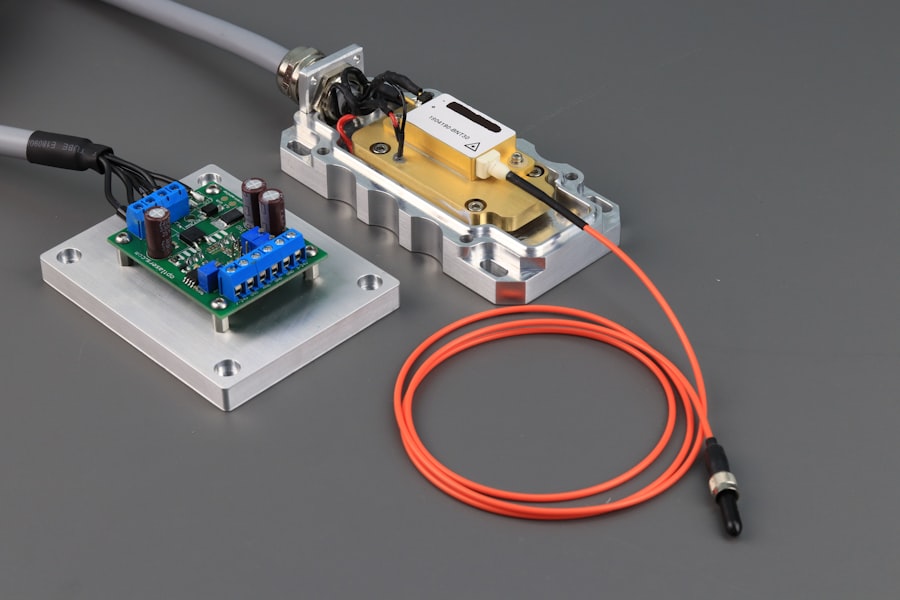Laser hair removal is a popular cosmetic procedure that utilizes concentrated beams of light to target and eliminate unwanted hair. The technology behind this method is based on the principle of selective photothermolysis, where the laser light is absorbed by the pigment in the hair follicles. This absorption generates heat, which effectively damages the follicle and inhibits future hair growth.
As you consider this option, it’s essential to understand how the process works, its benefits, and its limitations. The procedure typically involves multiple sessions to achieve optimal results, as hair grows in cycles, and not all hair is in the same growth phase at any given time. During your initial consultation, a trained technician will assess your skin type, hair color, and overall health to determine the best approach for you.
Many individuals find that laser hair removal offers a long-term solution compared to traditional methods like shaving or waxing, which only provide temporary relief. However, it’s crucial to have realistic expectations about the results and understand that while many experience significant hair reduction, complete hair removal may not be achievable for everyone.
Key Takeaways
- Laser hair removal uses concentrated light to target and destroy hair follicles, resulting in long-term hair reduction.
- Precautions and considerations before undergoing laser hair removal include avoiding sun exposure, discontinuing certain hair removal methods, and discussing medical history with a professional.
- Post-surgery healing and recovery may involve redness, swelling, and potential scabbing, but these symptoms typically subside within a few days.
- Consultation with a medical professional is essential to assess candidacy for laser hair removal and to discuss potential risks and complications.
- Potential risks and complications of laser hair removal include skin irritation, pigment changes, and rare instances of scarring or infection.
- Timing of laser hair removal sessions is important, as hair growth cycles and treatment intervals can impact the effectiveness of the procedure.
- Alternative hair removal methods, such as waxing, shaving, and depilatory creams, may be considered for those who are not suitable candidates for laser hair removal.
- In conclusion, laser hair removal is a safe and effective option for long-term hair reduction, but it is important to carefully consider precautions, consult with a professional, and be aware of potential risks and complications.
Precautions and Considerations
Before undergoing laser hair removal, there are several precautions and considerations you should keep in mind. First and foremost, it’s vital to choose a reputable clinic with certified professionals who have experience in performing the procedure. Researching reviews and asking for recommendations can help you find a qualified provider.
Additionally, you should schedule a consultation to discuss your medical history, skin type, and any medications you may be taking, as these factors can influence the effectiveness and safety of the treatment. Another important consideration is your skin’s sensitivity to light. If you have a history of skin conditions or have recently tanned your skin, it may be necessary to wait before undergoing treatment.
Tanned skin can absorb more light energy, increasing the risk of burns or discoloration. Furthermore, avoiding sun exposure and certain skincare products in the weeks leading up to your appointment can help minimize potential complications. By taking these precautions seriously, you can enhance your chances of a successful outcome.
Post-Surgery Healing and Recovery

After your laser hair removal session, it’s essential to follow proper aftercare instructions to ensure optimal healing and recovery. You may experience some redness or swelling in the treated area, similar to a mild sunburn. This is a normal reaction and typically subsides within a few hours to a few days.
To alleviate discomfort, applying a cool compress or soothing aloe vera gel can be beneficial. It’s also advisable to avoid hot showers, saunas, or strenuous exercise for at least 24 hours post-treatment to prevent further irritation. In the days following your session, you might notice some shedding of hair from the treated area.
This is a positive sign that the laser has effectively targeted the follicles. However, it’s crucial not to pluck or wax the hair during this time, as doing so can disrupt the hair growth cycle and diminish the effectiveness of future treatments. Instead, allow the hair to fall out naturally.
Staying hydrated and using gentle skincare products can also aid in your recovery process.
Consultation with a Medical Professional
| Consultation Date | Medical Professional | Reason for Consultation | Diagnosis |
|---|---|---|---|
| 2022-01-15 | Dr. Smith | Flu symptoms | Influenza |
| 2022-02-20 | Dr. Johnson | Back pain | Herniated disc |
| 2022-03-10 | Dr. Lee | Annual check-up | Healthy |
Consulting with a medical professional before proceeding with laser hair removal is an essential step in ensuring that you are a suitable candidate for the procedure. During this consultation, you will have the opportunity to discuss your goals and expectations while receiving expert advice tailored to your specific needs. A qualified practitioner will evaluate your skin type, hair color, and medical history to determine if laser hair removal is appropriate for you.
This consultation is also an excellent time to ask questions about the procedure itself, including what to expect during treatment and how many sessions may be required for optimal results. Understanding the technology used and any potential side effects will help you make an informed decision. Additionally, discussing your budget and any financing options available can help you plan for this investment in your appearance.
Potential Risks and Complications
While laser hair removal is generally considered safe, it’s important to be aware of potential risks and complications associated with the procedure. Some individuals may experience temporary side effects such as redness, swelling, or mild discomfort in the treated area. These symptoms usually resolve quickly but can be concerning if you are unprepared for them.
To minimize these risks, it’s crucial to follow pre- and post-treatment care instructions provided by your practitioner. Additionally, discussing any concerns or pre-existing conditions during your consultation can help identify potential complications early on.
By being proactive about your health and well-being, you can enjoy the benefits of laser hair removal while minimizing any adverse effects.
Timing and Timing of Laser Hair Removal

Timing plays a significant role in the effectiveness of laser hair removal treatments. Ideally, scheduling your sessions during seasons when you are less likely to be exposed to direct sunlight is advisable. Many individuals choose to undergo treatments in the fall or winter months when skin is less likely to be tanned.
This not only reduces the risk of complications but also enhances the efficacy of the laser on lighter skin tones. Moreover, spacing out your sessions according to your practitioner’s recommendations is crucial for achieving optimal results. Hair grows in cycles, and treatments are typically scheduled every four to six weeks to target hair in its active growth phase effectively.
By adhering to this timeline, you can maximize hair reduction and minimize regrowth over time.
Alternative Hair Removal Methods
While laser hair removal offers a long-term solution for unwanted hair, it’s essential to consider alternative methods that may suit your needs better or complement your treatment plan. Traditional methods such as shaving, waxing, and depilatory creams provide immediate results but require regular maintenance. Shaving is quick and easy but often leads to stubble within days.
Waxing offers longer-lasting results but can be painful and may cause skin irritation. For those seeking a more permanent solution without lasers, electrolysis is another option worth exploring. This method involves using an electric current to destroy individual hair follicles and is effective for all skin types and hair colors.
However, electrolysis can be time-consuming as each follicle must be treated separately. Ultimately, understanding the pros and cons of each method will help you make an informed decision about which approach aligns best with your lifestyle and preferences.
Conclusion and Final Considerations
In conclusion, laser hair removal presents an effective solution for those looking to eliminate unwanted hair with minimal long-term maintenance. By understanding how the procedure works, taking necessary precautions, and consulting with a qualified professional, you can enhance your chances of achieving satisfactory results. Remember that while many individuals experience significant hair reduction after several sessions, individual outcomes may vary based on factors such as skin type and hair color.
As you weigh your options for hair removal methods, consider both traditional techniques and newer technologies like laser treatments or electrolysis. Each method has its advantages and disadvantages; therefore, it’s essential to choose one that aligns with your personal preferences and lifestyle needs. Ultimately, investing time in research and preparation will empower you to make informed decisions about your body and appearance while ensuring a positive experience throughout your journey with laser hair removal.
If you are considering laser hair removal after surgery, it is important to consult with a professional to ensure it is safe for you.






